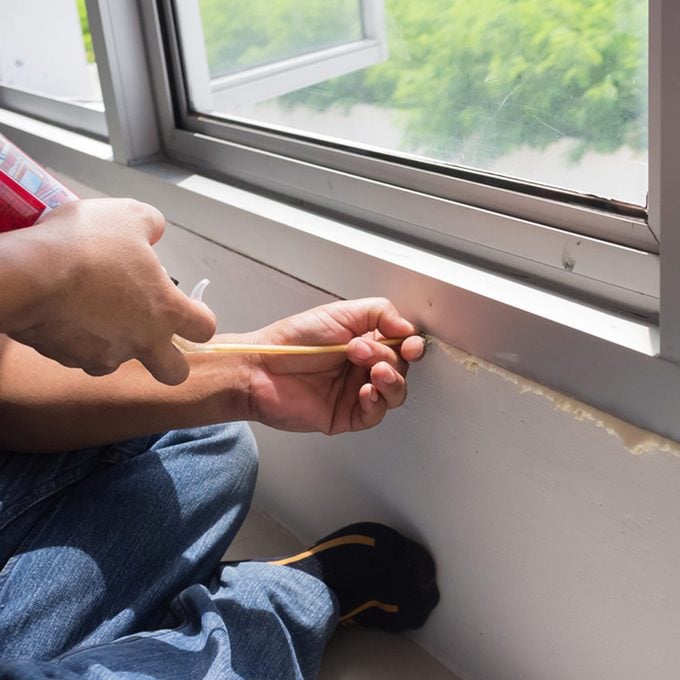We all love spray foam, but it shouldn't be used for everything! Here are seven things you shouldn't do with spray foam at home.
Never Do These Things With Spray Foam

Spray foam is a great insulation option, but is especially demanding to apply because it’s sticky and dries quickly. The instructions that come with spray foam have to be followed exactly to achieve optimal results. And it’s incredibly important to study the instructions so you can avoid how not to use it.
On This Page
Use Spray Foam Without Solvent Handy
Spray foam is tough to use neatly, even when you’ve got lots of experience with the stuff. That’s why those who use it regularly never buy it without also buying a can of foam solvent.
Sold in metal canisters similar in shape and size to spray foam cans, foam solvent is a liquid designed to chemically dissolve spray foam before it hardens. It’s perfect for cleaning the inevitable drips of foam off your floors, clothes and hands as you insulate. If you do use it on you hands, be sure to wash your hands thoroughly.
Buy Expired Spray Foam
Like food, expanding foam is best when it’s fresh. So always make sure you’re getting a fresh batch by checking the “Best by” date on the bottom of the can. If you’ve got a partially used can you think is still good, but the dispensing straw is clogged with hardened foam, here’s a tip for unclogging it.
Leave Your Hands, Arms and Eyes Exposed
Expanding foam is nearly impossible to keep off your hands. And once it’s there, it’s equally hard to get off. So unless you want to wear the foam for awhile, put on gloves. Disposable vinyl or nitrile gloves are a good choice. And wear old clothes because you’ll probably get foam on those, too. When working on larger insulation projects, consider disposable coveralls with a hood, along with gloves, a face mask and eye protection.
Use Spray Foam Around Electrical Boxes
When there is no insulation between the back of an electrical box and an outside wall, it may be possible to add insulation behind it. However, be careful not to get the foam inside the box because it will jam up parts. Plus, many spray foams are flammable. So be sure to use low-expanding foam behind the electrical box, which fills gaps without applying much force.
Use Spray Foam Around Recessed Ceiling Canister Lights
These lights are a prime area for heat loss if they’re installed on the underside of your roof, but be careful about some types of spray foam insulation around the top of ceiling light boxes. They can trap heat and increase the danger of fire. So make sure recessed canister lights are rated for close contact with insulation before enclosing them in this way. You can still fill air gaps around the electrical boxes for recessed light fixtures with an appropriately sized gasket.
Use High-Expansion Spray Foam Around Windows and Doors
Sealing around windows and doors is one of the most common uses for expanding foam. But the high-expansion stuff can actually push the jamb inward, making them impossible to open. Avoid this by using minimal expanding foam. It’s formulated to fill the space around windows and doors without excess expansion. Look for cans labeled for use on windows and doors.
Another good idea is to fill the space with two layers. Push the applicator tip all the way to the back of the space and move it quickly along as you pull the trigger. Let this first layer expand and cure. Then add another if necessary.
Set the Can Wherever
A problem with expanding foam is that sometimes it expands when you don’t want it to, like when you’re done foaming, set the can down, and excess foam drips from the nozzle. One way to avoid this is to keep a cardboard box handy. Always set the foam can in the box to catch the drips and to prevent a big mess.
Wipe Away the Foam Mess Immediately
When foam goes where you don’t want it, you’ll be tempted to wipe it up. Don’t, with the exception of eyes and skin. You’ll only spread the goo and make the mess worse. Instead, use solvent while it’s still wet, or let it harden completely and then scrape or sand it off. A utility knife with an extendible blade or a small, sharp fine-toothed hand saw with a flexible blade are great for cutting off excess foam.



















